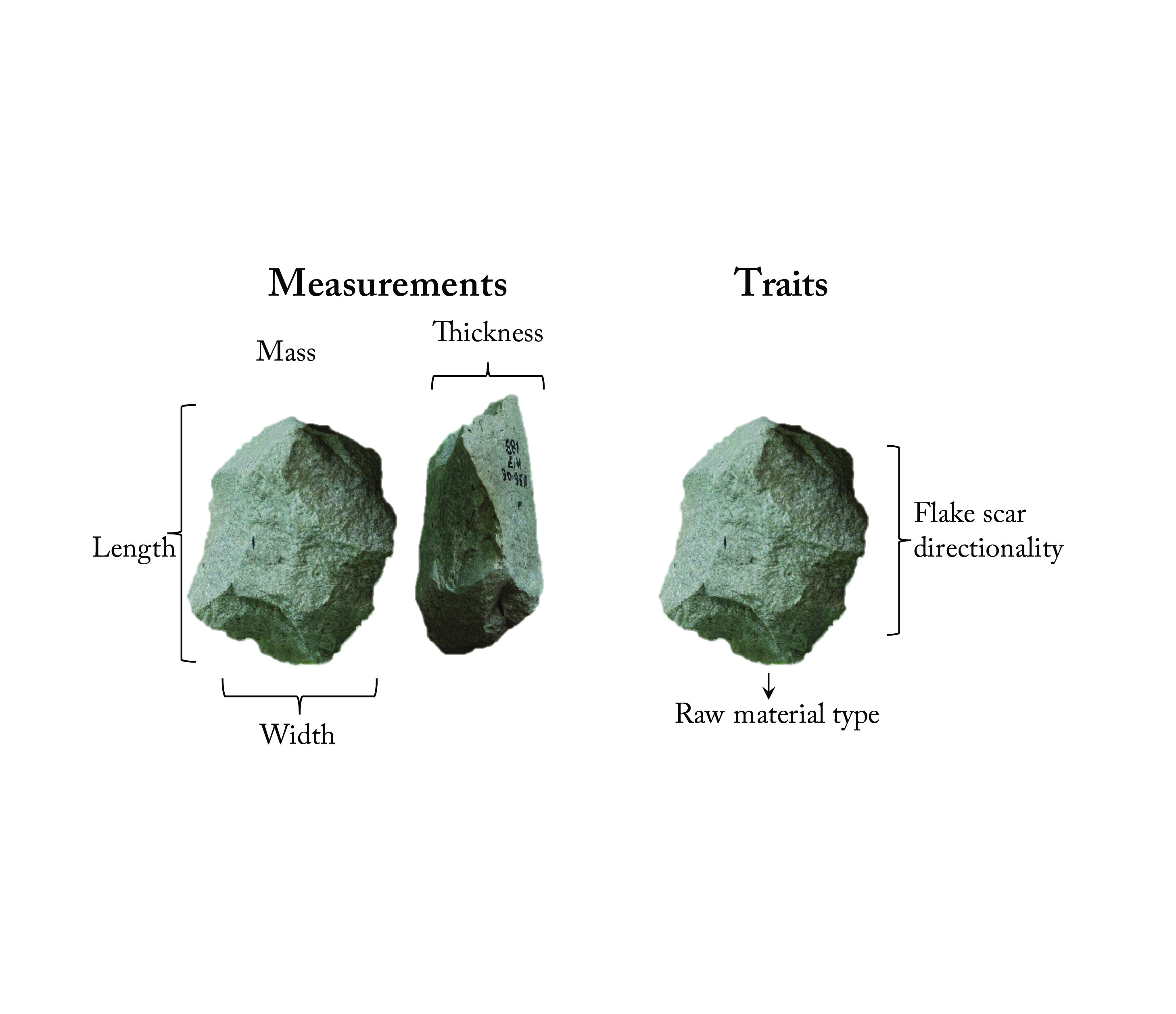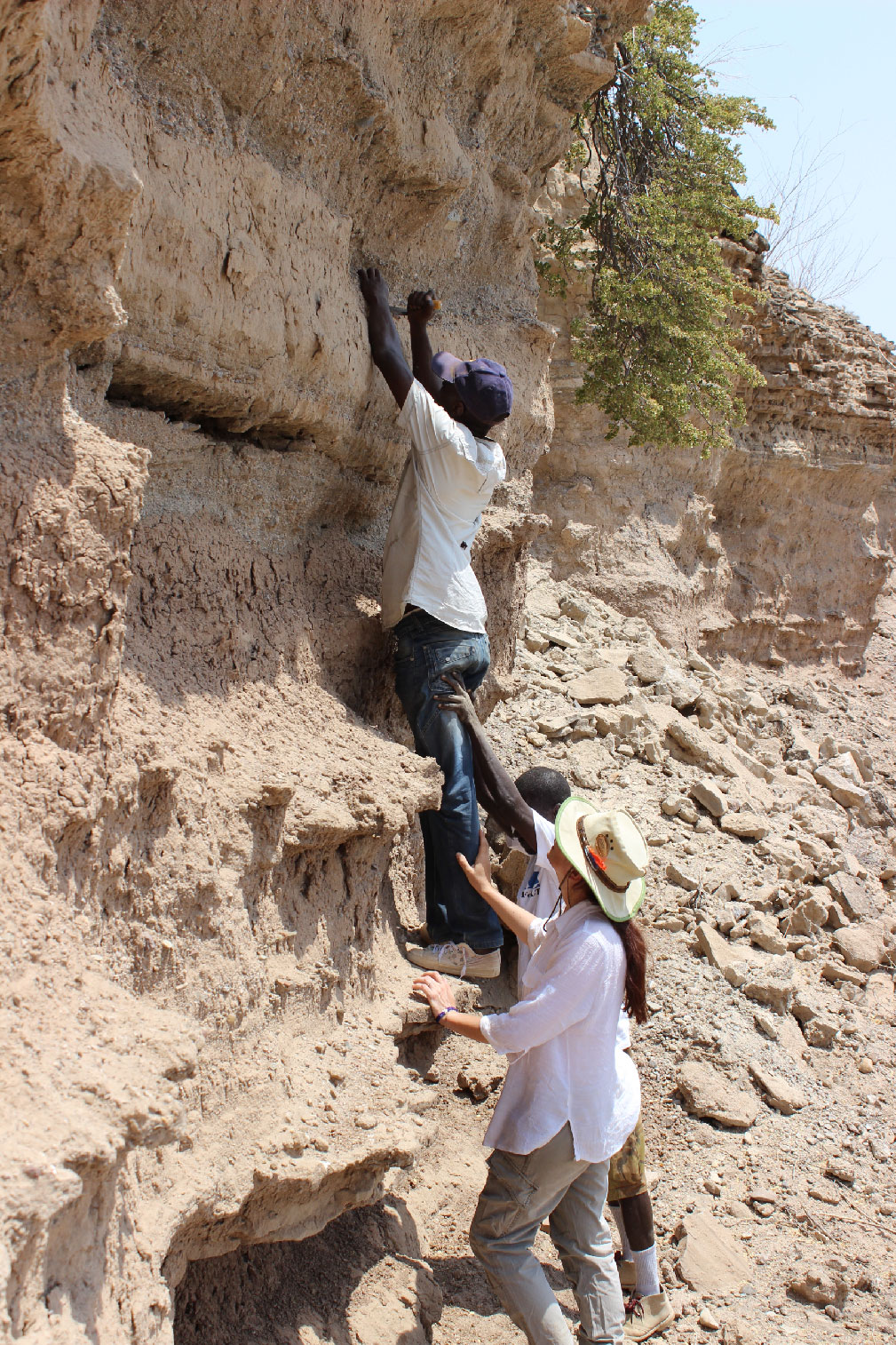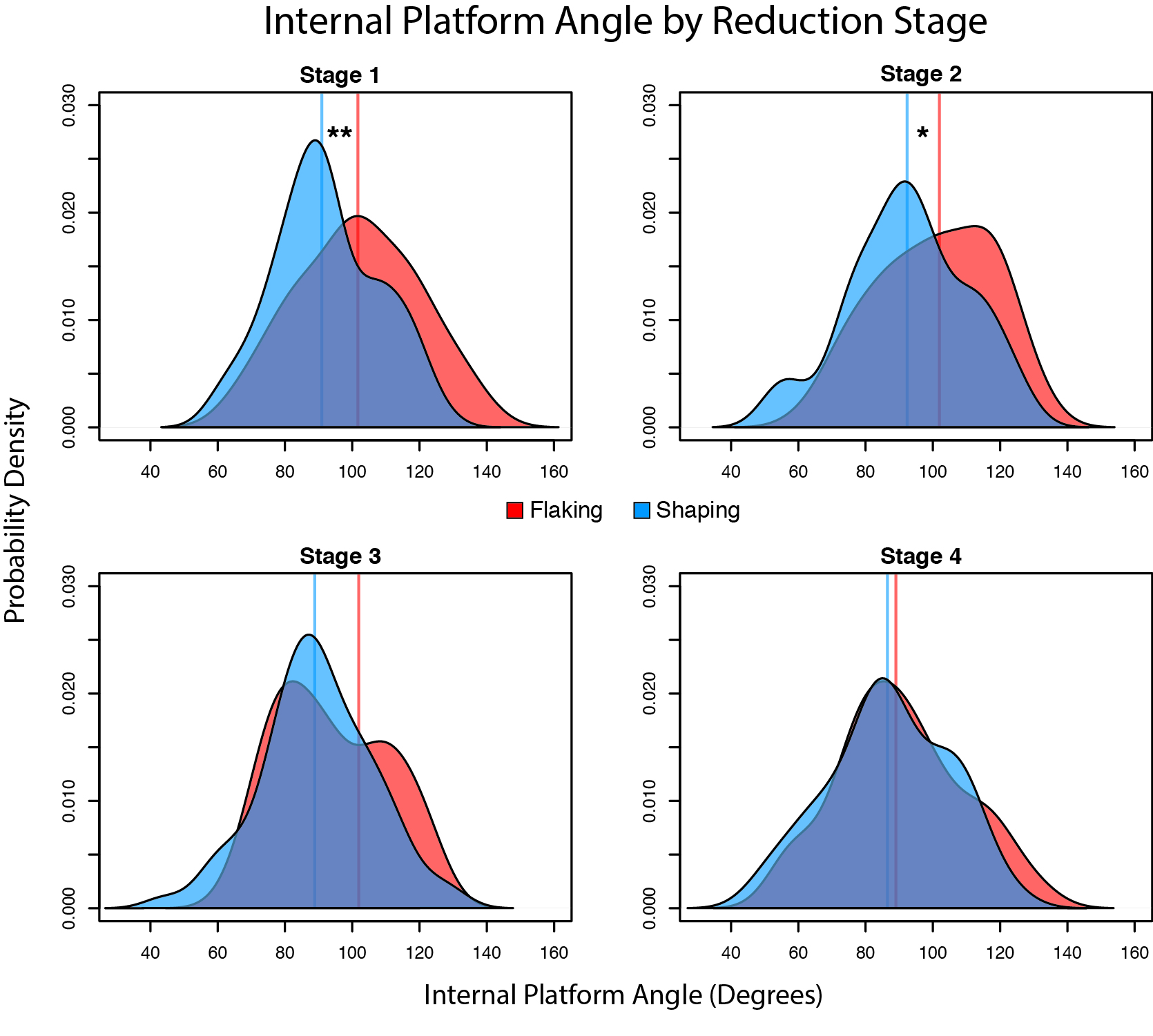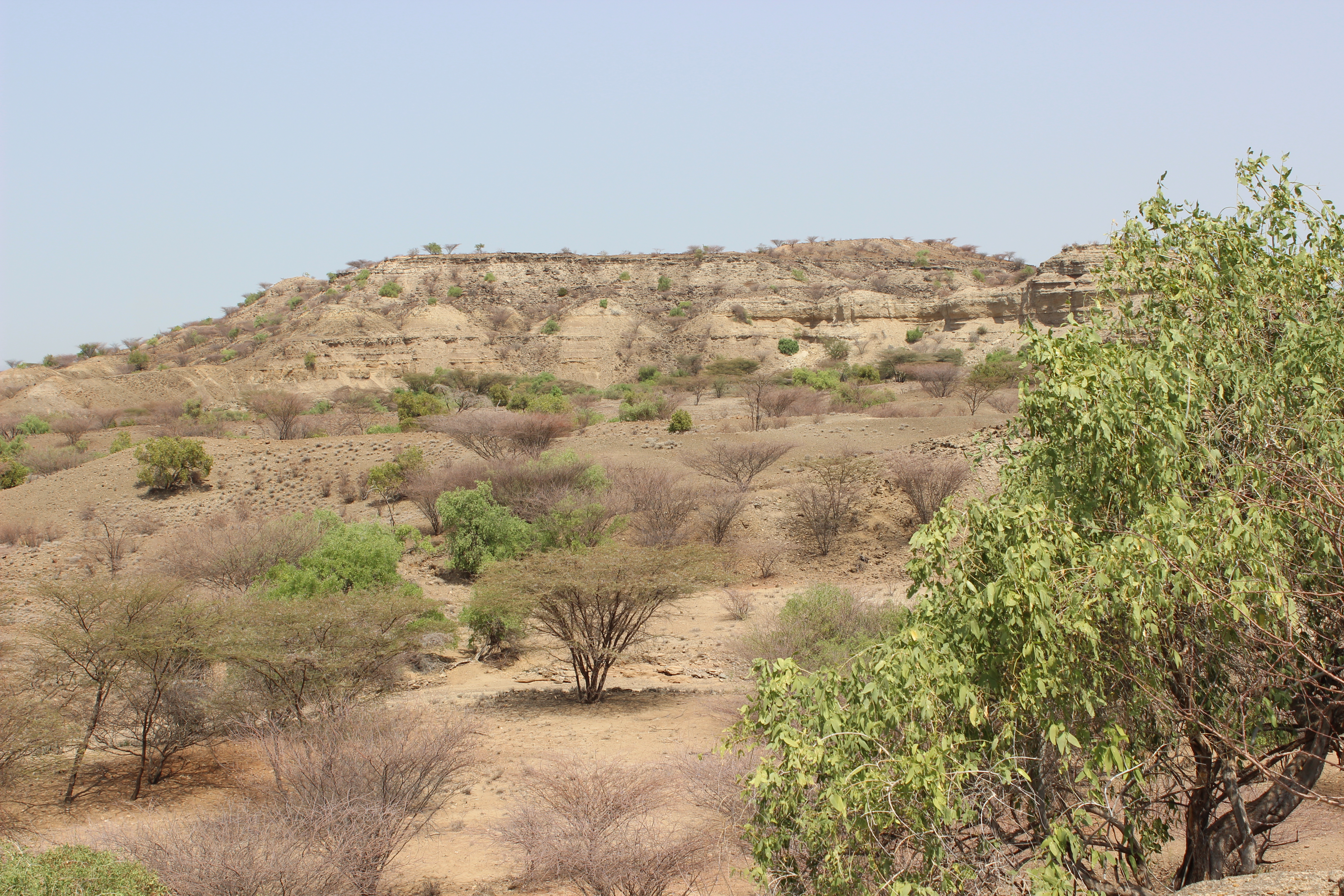Methods
Summary
Data collection at UC Santa Cruz
I will be traveling to Santa Cruz to collect data from an experimental stone tool assemblage. Collecting data from stone tools can be a complicated task. It can require years of experience and training to develop a working methodology.
Stone tools are not just random objects, they physically represent the actions, intentions, and skills of tool-making individuals. Click here to view some of my recent work on understanding the relationship between levels of skill and patterns in stone tools. In many ways, the specific actions of tool-makers is 'written in stone'.
It's easy to make the mistake of assuming the tool-makers intentions based on how a stone tool looks (sometimes referred to as the 'finished artifact fallacy'). Experimental archaeologists strive to develop objective methods for collecting behaviorally relevant data from stone tools. In other words, we use standardized methods for measuring stone tools that have direct relevance to the actions of the person that made them (thanks to past experimental observations).
My methods include a series of measurements and qualitative traits. These quantitative and qualitative data will give me a picture of how specific technological features vary.
Stone tools can be broadly broken up into two categories: flakes and cores. When a tool-maker strikes a stone, a piece of that stone will be removed (if you know what you're doing). The piece that flies off is called a "flake", and these can often be used 'as is' for quick cutting tools. The stone from which the flake was removed is called a "core". Each of these categories of stone tools has their own set of variables for data collection.
Archaeologists who study stone tools need to learn their anatomy, just like a doctor needs to know the parts of a human body. When individuals intentionally break apart rocks into tools, they produce specific, predictable and recognizable features. More than that, different methods of making stone tools (making a quick, sharp flake versus a beautifully thinned and symmetrical handaxe) leave behind specific variations of these traits in the stones.


Flake shapes and qualitative features can vary according to how the tool-maker hit the stone (E.g., the specific angle of the blow, the rotation of the stone, preparing the surface of the stone before striking, etc.). Because breaking apart a stone is irreversible, a permanent mark is left on the core after every flake is removed. Archaeologists have developed methods for 'reading' cores - reconstructing how different flakes were removed and whether this happened in a specific pattern. Variations in core measurements and qualitative traits can tell archaeologists about the strategies the tool-maker used.
I have been working on my PhD data collection methods for approximately two years. This work involved pilot studies of the archaeological collections at the museum in Nairobi and some trial-and-error pilot experiments. There are many different qualitative traits and quantitative measures that you can take on stone tools. The most important part of experimental archaeological design is to choose the variables that are most relevant to your research questions. I have tailored my data collection methods based on my pilot observations in the museum and the lab.
Replicating the original experiment
Dr. Reti's experimental assemblage is a great start for my data collection. But, the assemblage was initially created to compare to specific sets of archaeological sites in Tanzania and northeastern Kenya. There is a huge amount of variability in the types of stones within a given geographical region. Types, shapes and sizes of stones can influence the shapes and traits of subsequent stone tools.
While they are a good comparison, Reti's experimental tools were not made on stone materials exactly like the ones human ancestors used to make the tools at Kokiselei. So, I plan to replicate Reti's experimental design, but I will use stones that I collected from the same stone material sources that human ancestors used at Kokiselei. The expanded experimental sample will bridge any differences that might arise when comparing stone tool made from different types of raw materials.
The experiment involves one, experienced tool-making participant. They are given specific instructions about the tool-making actions that they can use to make their stone tools. The participant can choose from 4 different tool-making actions at each flake removal. These decisions are guided by a single tool-making goal: to create a useable, whole flake. The tool-maker will decide on which action will give the best likelihood to produce a flake. For more details about the experimental protocol, check out Dr. Reti's recent publication.
This will continue until the participant can no longer remove flakes from the core. Once this assemblage has been created, I will conduct the same analysis of the cores and flakes.
Challenges
While they are a good comparison, Reti's experimental tools were not made on stone materials exactly like the ones human ancestors used to make the tools at Kokiselei. So, I plan to replicate Reti's experimental design, but I will use stones that I collected from the same stone material sources that human ancestors used at Kokiselei.

The expanded experimental sample will bridge any differences that might arise when comparing stone tool made from different types of raw materials.
The experiment involves one, experienced tool-making participant. They are given specific instructions about the tool-making actions that they can use to make their stone tools. The participant can choose from 4 different tool-making actions at each flake removal. These decisions are guided by a single tool-making goal: to create a useable, whole flake. The tool-maker will decide on which action will give the best likelihood to produce a flake. For more details about the experimental protocol, check out Dr. Reti's recent publication.
This will continue until the participant can no longer remove flakes from the core. Once this assemblage has been created, I will conduct the same analysis of the cores and flakes.
Pre Analysis Plan
After the completion of this experimental data collection, I should have some nice distributions of variables that look something like this...
 These figures show the distributions of internal platform angle measurements taken on flakes created via shaping vs. flaking (in a pilot experiment). The data are broken up according to the stage in the tool-making process. Stages 1 and 2 are early stages of flaking (the first 50% of flakes removed), while Stages 3 and 4 are later in the tool-making process. Notice that the significant differences here only occur at the beginning of the sequence.
These figures show the distributions of internal platform angle measurements taken on flakes created via shaping vs. flaking (in a pilot experiment). The data are broken up according to the stage in the tool-making process. Stages 1 and 2 are early stages of flaking (the first 50% of flakes removed), while Stages 3 and 4 are later in the tool-making process. Notice that the significant differences here only occur at the beginning of the sequence.
With 20-something measurements and traits recorded on thousands of flakes and hundreds of cores, data analysis may seem daunting.
The same data collection protocol will be applied to the Kokiselei archaeological artifacts.
I will use multivariate (many quantitative and qualitative variables) statistics to explore potentially meaningful patterns in the relationships between these many variables. Then I will be able to compare the experimental and archaeological patterns and to quantify any differences.
Protocols
This project has not yet shared any protocols.
